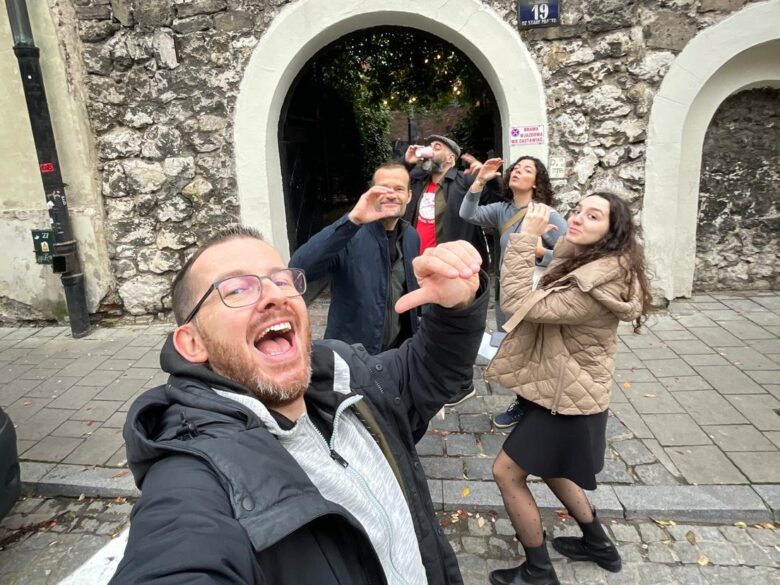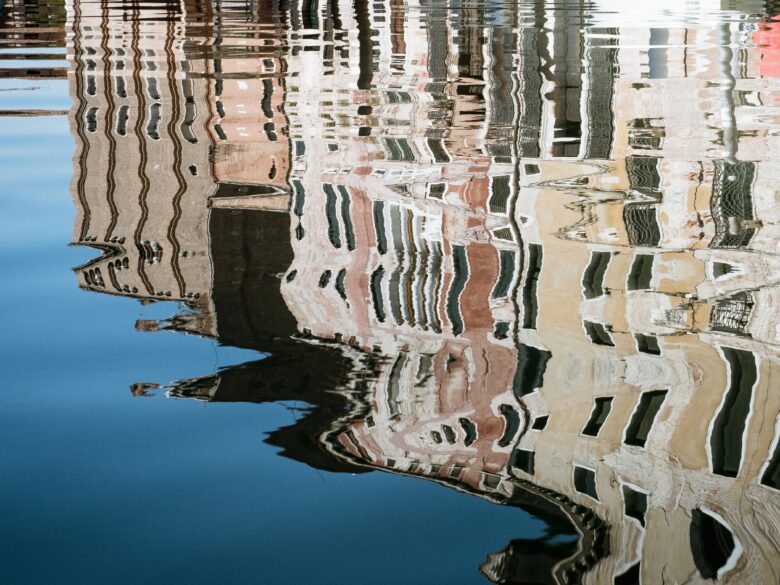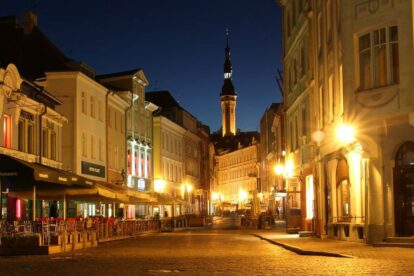
Old Town Tallinn – by Mark Litwintschik
Few cities can claim an eventful history and, at the same time, an urban fabric that still retains an almost unimpaired historic homogeneity. Tallinn is one of them: throughout the more or less thousand years of its life, the capital of the northernmost Baltic Republic has been witnessing handovers, annexation and change of sides. As for many other places, Tallinn has been suffering from the constant turnovers that have affected Estonia and the nearby geographical area; nevertheless this has added to, rather than detracted from, its rich heritage.
The city originally developed as a fortress on the hill of Toompea, and soon after became a thriving trading centre under the German-led Hanseatic League. During the Middle Ages the city, back then known by its German name Reval, was first sold by the Danes to the Teutonic Knights, while from the 16th to the 18th century it was part of the Kingdom of Sweden. At the end of the 18th century Estonia came under the rule of Russia, and was affected by a strong process of Russification. Capital of independent Estonia from 1918 (in this year the city acquired its present name) to 1940, and after WWII of the Estonian Socialist Soviet Republic until 1991, Tallinn is now the capital of a young country that has experienced a quick yet sustainable development and whose prospects, despite the economic crisis, are among the most promising in Europe.
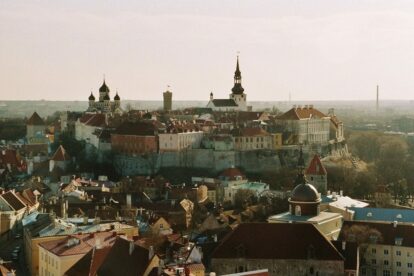
Toompea – by Arlan Zwegers
Every year, in any season and regardless of the weather, the city receives a steadily increasing amount of tourists, coming from all over the world to admire the local beauties (and with that we are not only referring to its cultural opportunities, just saying…). Despite being a middle sized city, Tallinn provides countless opportunities in any aspect. It is true that the nightlife and hostelry have largely adapted to mainstream tourists’ requests and expectations, and indeed its cheap prices and notorious party scene keeps attracting a rowdy group of visitors; however, if you are willing to flee the hordes of hyped-up tourists and insidious tourist traps, Tallinn will fully uncover an attractiveness that goes beyond its intact, beautiful Medieval Old Town (now a UNESCO World Heritage Site). As our Spotter Marianna stated, “The magic of the city lies in its ability to surprise you all the time.”
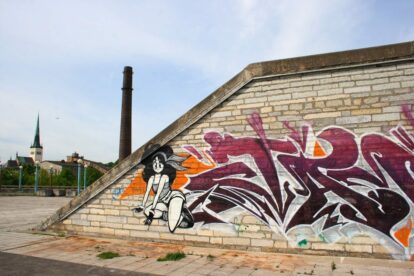
Linnahall Graffiti – by Antti T. Nissinen
Ready to set sail? Here’s our 48 hour itinerary that will guide you through the Estonian capital. As a local, of course.
In the northern portion of the Old Town, we chose Bonaparte Cafe as the right place to begin your first day in Tallinn. Bonaparte Cafe is a well-praised restaurant and also French-style cafe. Its snug interior, a coffee and a freshly baked pastry will pamper your body and soul before starting to explore the city, especially if you’re visiting when the temperatures are not that warm yet. Still, if your sweet tooth needs some more attention, you should pay a visit to the Marzipan Museum. The claim to this sugary invention is debated among several places, but… should we really enter this querelle? In the Marzipan Museum you’ll also see an artist in action, painting the sweets. Right around the corner, the minimalist Hop Galerii is a little jewel with always new exhibitions coming up. Even if you’re in a rush you should just stop in front of its window: the space is tiny, and you can see the whole exhibition through it.
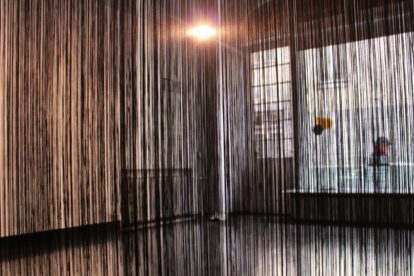
Hop Galerii – by Nikolai Ostashov
Day 1: 13:00 – 19:00
No gangs of tourists in Boheem, located next to the train station and therefore off the usual beaten trails. The restaurant offers huge meals at affordable prices; although you might want to try some traditional soups, the place is highly recommended by our Spotter Dmitri for its flavoursome Caesar Salad. Close to it, walk around the Russian Market, as locals call it: strolling past the stalls you could find some funky second-hand clothes or a piece of Soviet memorabilia – which just makes for the perfect, alternative souvenir. The market marks the beginning of Kalamaja. Once a working class neighbourhood, Kalamaja is now the hippest area of Tallinn. Wander around its pretty streets, dotted with colourful wooden houses dating back to the 19th century, and aim to its northern offshoots, destination: Seaplane Harbour, the maritime museum of Tallinn. Besides the fact that here you can admire unique pieces and learn about the maritime past of the city, the museum’s architecture and the way the exhibition is showcased are true masterpieces themselves.
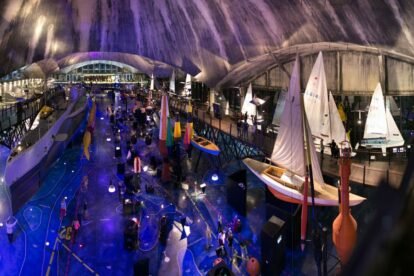
Seaplane Harbour- by Dmitri Korobtsov
Understandably, the history of Tallinn is tightly interconnected with the sea. Not far from the Seaplane Harbour stands Patarei Sea Fortress. Built almost two centuries ago, Patarei firstly served as barracks, and became a prison in 1920. Now it is considered a culture park and hosts different kind of events. Patarei is open to everyone from May until September, but during the other months (in case its gloomy atmosphere doesn’t distress you too much) you can also visit it with a guided tour.
Day 1: 19:00 – 23:00
If Kristina recommends it, believe her: she’s a Tallinnian born and bred. Rataskaevu 16 is right off the main square, but while most of the nearby restaurants are classic tourist traps, this one stands out for its tasty food and cheap prices; the friendly staff and its sleek interior complete the picture of this easy and enjoyable restaurant.
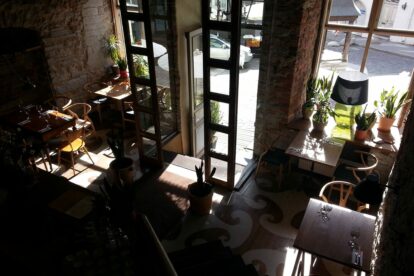
Rataskaevu 16 – by Rataskaevu 16
To the west of the centre, Kolm Sibulat is as pretty as it is popular among Tallinn’s citizens: the restaurant offers an international menu in a cool, contemporary setting. If it’s not chilly outside and you enjoy a walk, you might chose to have a drink based on your previous choice. At a very short walking distance from Rataskaevu, DM Baar is a very popular destination among both tourists and locals. DM stands for Depeche Mode, whose songs are repeatedly and endlessly played throughout the whole night. But as tastes differ and you might just not want that, closer to Kolm Sibulat you’ll find Pööbel, a good option with a homey yet alternative look.
Day 1: 23:00 – …
Indeed Tallinn deserves its reputation as a big nightlife hub, and Telliskivi area is quite a hot spot for party animals. Head to Kivi Paber Käärid (translated in English as Rock Paper Scissors), a venue well-renowned for its tasty food during the day and for its cool parties during the night, or alternatively to Von Krahli Baar. Back in the 90s Von Krahli was a privately owned theatre; now it’s one of the most notorious venues for alternative music gigs and DJ sets in the whole city, its second floor still having retained its original vocation as theatre – so just put on your dancing shoes and get ready on the floor!
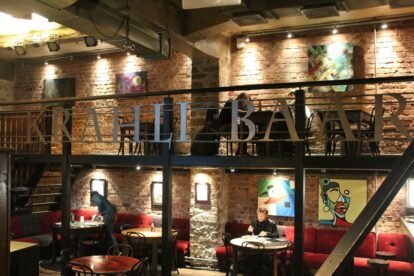
Von Krahli Baar – by Nikolai Ostashov
Day 2: 09:00 – 13:00
Some places try to get some allure with a vintage makeover, while others have just remained the way they were when they first opened their doors. Narva belong to the latter: this bakery and coffee place is well-known for its traditional meals and breakfast, and owes its success among Tallinn’s citizens to its grandma-style, old fashioned delicacies. Further to the east, in the Kadriorg area, Gourmet Coffee offers exactly what the name suggests, and it is considered one of the best coffee places in town. Just tell the baristas about your taste – they will suggest something for you from the wide, excellent range of beans they roast. And since you’re in Kadriorg, don’t miss out on KUMU, a branch of the Art Museum of Estonia and the biggest museum in the country. Hosted in a stunning building erected in the 90s, in 2008 KUMU received the European Museum of the Year Award. KUMU is home both to permanent collections (mainly focused on Estonian art from the 18 century onwards) and temporary exhibitions.
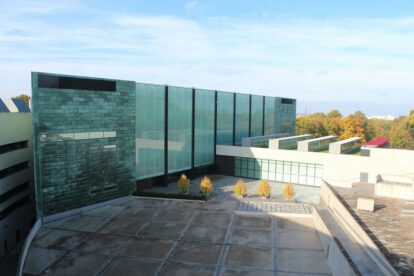
KUMU – by Nikolai Ostashov
Day 2: 13:00 – 19:00
Don’t be too much in a rush to head back to the heart of Tallinn: KUMU is situated in the elegant, well-kept Kadrioru Park, originally the private park of Kadriorg Palace (now a branch of the Art Museum of Estonia too), built by Peter the Great for Catherine I of Russia. Also in the park, keep feeling royal and have a bite at Katharinenthal, a sophisticated cafe/patisserie that also hosts a chi-chi restaurant with a ‘champagne terrace’. However, in case you’re after something less Ancien Régime, your choice should fall on SfääR. One of the trendiest venues in the entire city, SfääR is both a restaurant (it has been listed among the 50 best restaurants in Estonia for the year 2016) and a fashionable, hipster store (they also opened an outlet store in 57 Telliskivi street). It is located in the Rotermann Quarter, a 19th century industrial area that is being regenerated by a a group of entrepreneurs.
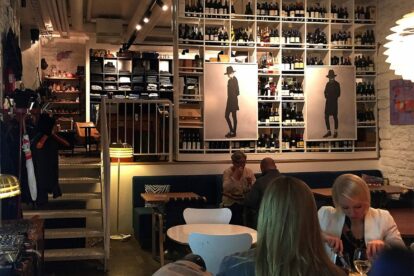
SfääR – by Marianna Kasi
Tallinn’s harbour is a stone’s throw from Rotermann: the area is crossed by what is known as Cultural Kilometre, a footpath stretching from the Linnahall to the Seaplane Harbour. The route will give you the chance to see Tallinn’s other face – just north of the picturesque Old Town, this edgy area is characterised by the presence of abandoned industrial facilities, cutting-edge art galleries and a lot of graffiti-covered ruins. The Linnahall is one of the most interesting pieces of architecture in this raw area. Built in the 80s for the Summer Olympic Games, the Linnahall is a fine example of Soviet monumentalist architecture. According to our Spotter Nikolai, its roof is one of the best spots to enjoy an amazing sight of Tallinn’s bay. Just one last thing: if you happen to be around here on a Saturday, don’t forget to pay a visit to the Kalaturg, Tallinn’s fish market – it’s a few minutes away from the Linnehall.
Day 2: 19:00 – 23:00
Good food at a decent price in a retro setting, located by the sea and off the beaten track: this is Klaus, a small and lovely cafe-restaurant which makes for a great dinner. Not far from the sea either, always in Kalamaja, Moon is the first restaurant opened by the same two cousins (Igor and Roman) who run the previously mentioned Kolm Sibulat. After working in the high-end restaurant scene of the capital, the two chefs decided to get together and realise their dream – a restaurant that could offer the same exquisite food they were preparing at more affordable prices. It therefore comes as no surprise that “Papaver Flower” (that’s what “Moon” stands for in Estonian) is now considered among the best food spots in Tallinn.
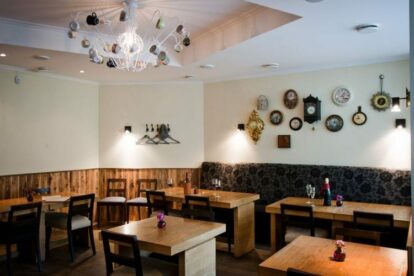
Moon – by Lauri Laan
Nonetheless, sometimes there’s no need to exit the Old Town to avoid touristy places: Koht/Moonshine is a tiny, beautifully decorated beer bar that Kelli spotted a while ago. Koht/Moonshine has no more than 15 seats, making it a super intimate place (but don’t be fooled – it might get much busier than that, and during the weekend it’s open until early in the morning!). And, more importantly, they have a ridiculous selection of beers – throw out a number? More than 500.
Up for something more, let’s say, versatile? Head to Red Emperor Bar. As part of the Red Emperor hostel, the bar gathers both international visitors and locals, attracted by the constantly changing events held every day of the week.
Day 2: 23:00 – …
Forget tiredness, and roll to PAI. Opened only half a year ago, PAI is well-known for hosting some of the coolest parties in town, in a simple and minimal – yet refined – environment. Or, for a still groovy but more homey setting, roll (by this time of the night you might literally be rolling) to Sinilind. Sinilind is a cafe-club that, like Red Emperor, hosts different kinds of nights – Fridays and Saturdays are for raucous DJ sets and music gigs.
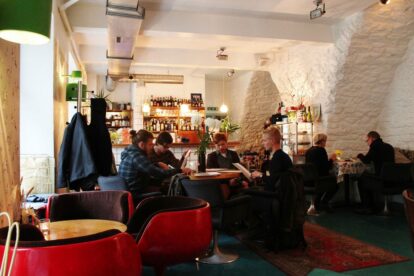
Sinilind – by Nikolai Ostashov
The venue is located in one of the most characteristic streets of Tallinn, right inside the Eastern bit of the walls that centuries ago surrounded the city – a city that, as you might have understood, has quickly evolved into a developed European centre without detriment to its glorious, rich past.
More? Check our Tallinn blog or app!

![10 Unique Flea Markets in Europe [2024 Update!]](https://www.spottedbylocals.com/wp-content/uploads/midnightbazar-munich-by-ayla-amschlinger.jpg)
